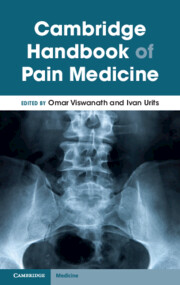Book contents
- Cambridge Handbook of Pain Medicine
- Cambridge Handbook of Pain Medicine
- Copyright page
- Contents
- Contributors
- Pain Handbook Introduction
- Part I Introduction to Pain: Pain Signaling Pathways
- Part II Common Categories of Pharmacologic Medications to Treat Chronic Pain
- Part III Chronic Pain Conditions Head and Neck
- Part IV Spine
- Part V Extremities
- Part VI Misc
- Chapter 26 Post-herpetic Neuralgia (PHN)
- Chapter 27 Complex Regional Pain Syndrome (CRPS)
- Chapter 28 Sickle Cell Disease
- Chapter 29 Breast Pain
- Chapter 30 Post-thoracotomy Pain
- Chapter 31 Multiple Sclerosis Pain
- Chapter 32 Cerebral Palsy
- Chapter 33 Myofascial Pain Syndrome
- Chapter 34 Post-stroke Pain
- Chapter 35 Chronic Abdominal Pain
- Chapter 36 Chronic Pelvic Pain
- Chapter 37 Postsurgical Nerve Entrapment
- Chapter 38 Cancer Pain
- Part VII Adjunctive Therapy
- Index
- References
Chapter 32 - Cerebral Palsy
from Part VI - Misc
Published online by Cambridge University Press: 01 December 2023
- Cambridge Handbook of Pain Medicine
- Cambridge Handbook of Pain Medicine
- Copyright page
- Contents
- Contributors
- Pain Handbook Introduction
- Part I Introduction to Pain: Pain Signaling Pathways
- Part II Common Categories of Pharmacologic Medications to Treat Chronic Pain
- Part III Chronic Pain Conditions Head and Neck
- Part IV Spine
- Part V Extremities
- Part VI Misc
- Chapter 26 Post-herpetic Neuralgia (PHN)
- Chapter 27 Complex Regional Pain Syndrome (CRPS)
- Chapter 28 Sickle Cell Disease
- Chapter 29 Breast Pain
- Chapter 30 Post-thoracotomy Pain
- Chapter 31 Multiple Sclerosis Pain
- Chapter 32 Cerebral Palsy
- Chapter 33 Myofascial Pain Syndrome
- Chapter 34 Post-stroke Pain
- Chapter 35 Chronic Abdominal Pain
- Chapter 36 Chronic Pelvic Pain
- Chapter 37 Postsurgical Nerve Entrapment
- Chapter 38 Cancer Pain
- Part VII Adjunctive Therapy
- Index
- References
Summary
Cerebral palsy (CP) is a neurological disorder that greatly affects movement and occurrence of muscle spasticity as well as other problems. Cerebral palsy significantly decreases quality of life in patients.Causes of CP are still not fully known but prenatal complications as well as trauma during pregnancy can lead to higher risk. It is recommended for expecting mothers to not overexert themselves during pregnancy and keep consistent health checkups to prevent causative factors. Current treatments to reduce spasticity and other symptoms involve botulinum toxin type A, intrathecal baclofen, dorsal rhizotomy, dantrolene, diazepam, flexeril, and tizanidine. Each method prevents some level of relief, but all come with their own existing risks and adverse effects. Patients must outweigh the risk over potential gain with the use of each treatment for pain and spasticity.
- Type
- Chapter
- Information
- Cambridge Handbook of Pain Medicine , pp. 253 - 260Publisher: Cambridge University PressPrint publication year: 2023



